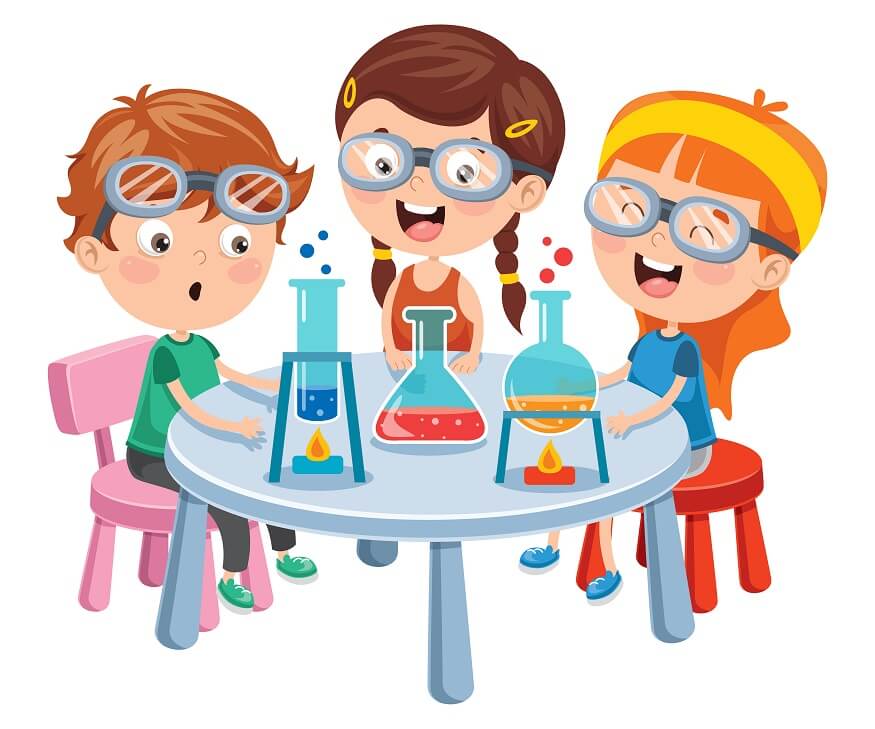Class VII typically marks the onset of secondary schooling. 7th graders are around 12-13 years of age which also marks the onset of the critical teenage years for the kids. In many ways, this is a very critical and formative stage in the academic and personal evolution of students. This is when they start forming opinions, becoming more decisive about their likes and dislikes. This is also the age when their subject matter interests start to take a more concrete shape. Students who develop an inclination towards science, start exploring how the world works and how various scientific phenomena come by. They start experimenting with science which embarks them on the magical journey of scientific exploration.
Working on science projects and experiments forms an integral part of their learning from 7th grade onwards. In this article, we present a list of interesting science projects for class 7 students. 7th graders can engage in these science projects for kids and organise them with ease without much effort. These 7th-standard science projects can be done by kids individually or even in groups of 3 to 5 kids.
Science Projects for 7th Graders
Solar oven
Use the power of sunlight to build an oven at home. This solar oven involves concepts of physics such as solar energy, reflection, convection, etc. Kids can build this solar oven at home by using easily available items such as two cardboard boxes (even a pizza box works), a glass picture frame, aluminium foil, newspapers, plastic wrap, duct tape, and glue. Put the oven in the sun. The best time is between 11 am to 2 pm. The glass frame lets the sunlight in, and the aluminium foil ensures the solar energy remains inside the box and is reflected to heat the ingredients.
Water turbine project
A water turbine is a machine that converts kinetic and potential energy from flowing water into mechanical work. Water turbines use hydropower to generate energy that can be put to productive use. The most prominent applications of water turbines are for dams to use the energy of flowing water to generate electricity. Making a DIY mini water turbine could be a fun and engaging 7th-grade science project. A mini water turbine can be constructed with easily available items such as a 2-litre plastic bottle (such as a soft drink bottle), a Ruler, a Marker, a Craft knife, a pair of scissors, 2 corks, a wooden stick, sewing thread, small objects to lift/move (such as paneer cubes, or eraser, etc), Duct Tape, a large Funnel, and some paper clips. If you have watched the popular Hindi movie Taare Zameen Par you would recall the moving boat Ishan builds and that is an example of a water turbine project.
Potato battery project
Kids are always curious about electricity and this project could be one of the most exciting science projects in class 7. In this case, kids can learn how chemical energy can be converted into electrical energy. Kids can go through this amazing endeavour to light a bulb with a potato by just using items easily available at any hardware or electrical store, such as Two potatoes, two zinc-coated or galvanised screws, three copper wires, two small coins, if available, or alligator clips, a small LED bulb, and a multimeter or voltmeter (optional). Using simple concepts of science, the amazement on the faces of kids will be picture worthy once they see the bulb light up, with just a potato!
Pinhole camera project
The pinhole camera project can be another exciting project in the list of science projects for class 7 students. This activity can indulge kids in the magical phenomenon of light. A pinhole camera can be made by using simple items such as a box, photo paper, a thin piece of metal like a can or brass shim, tape, a craft knife, a needle, and sandpaper. Go out into bright sunlight and take some pictures with the camera made at home. Isn’t that exciting!
Vacuum cleaner project
We all have fancy vacuum cleaners at home that we use for our house cleaning. What if you could make one at home, with just plastic bottles? All you need is a plastic bottle, a deodorant can, first aid cloth, a DC motor (easily available at any electrical store, also on Amazon), glue and a small bending pipe (like the one typically attached to a washing machine’s water outlet). Within no time you will have a vacuum cleaner ready that can be used to clean up some minor dirt in and around the house.
Periscope project
Do you want to see what’s happening on the other side of a high boundary wall? If you are not tall enough to peak on the other side, a periscope can help you see all that is happening on the other side without climbing a ladder or attempting to climb the high wall. Simple concepts of physics such as the reflection of light are used to create a periscope at home. This exciting science project for kids can be accomplished with simple items such as two mirrors, two PVC pipes of 12-inch sections, one slightly larger in diameter than that of the other so that they can easily slide up & down when clubbed together, 2 elbow joints- PVC: one is to fit smaller pipe and the other to fit a larger one, adhesive glue. You can easily source all these items at any nearby hardware store.
Robotics projects
Kids love playing with toy cars and other robotic toys. What if they could make one themselves? Robotic DIY kits are easily available on Amazon and other platforms which contain all the items kids need to create their exciting robots. Using simple items such as batteries, motors, and other homely waste items, kids can create exciting robotic toys such as a leaping frog, a toy car, a robotic ant, and even a walking robot. The ecstasy they will experience when their handmade robot will move across the floor will be unparalleled.
Also Read: How to Choose Education Streams after 10th Class: A Complete Guide
Enroll your child with EuroSchool today!











